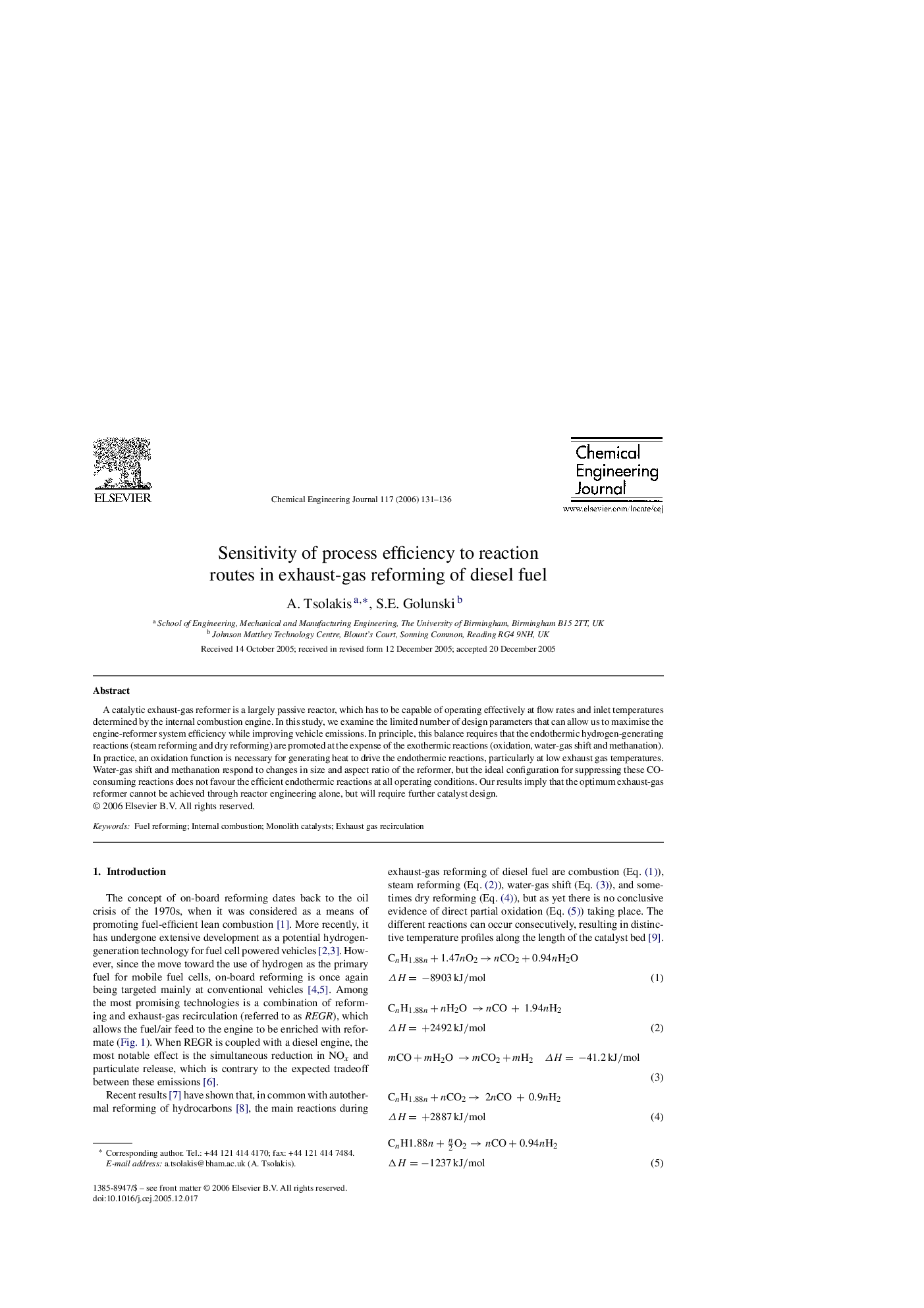| Article ID | Journal | Published Year | Pages | File Type |
|---|---|---|---|---|
| 154274 | Chemical Engineering Journal | 2006 | 6 Pages |
A catalytic exhaust-gas reformer is a largely passive reactor, which has to be capable of operating effectively at flow rates and inlet temperatures determined by the internal combustion engine. In this study, we examine the limited number of design parameters that can allow us to maximise the engine-reformer system efficiency while improving vehicle emissions. In principle, this balance requires that the endothermic hydrogen-generating reactions (steam reforming and dry reforming) are promoted at the expense of the exothermic reactions (oxidation, water-gas shift and methanation). In practice, an oxidation function is necessary for generating heat to drive the endothermic reactions, particularly at low exhaust gas temperatures. Water-gas shift and methanation respond to changes in size and aspect ratio of the reformer, but the ideal configuration for suppressing these CO-consuming reactions does not favour the efficient endothermic reactions at all operating conditions. Our results imply that the optimum exhaust-gas reformer cannot be achieved through reactor engineering alone, but will require further catalyst design.
